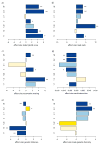Genetic effects on mating success and partner choice in a social mammal
- PMID: 22673655
- PMCID: PMC3431189
- DOI: 10.1086/665993
Genetic effects on mating success and partner choice in a social mammal
Abstract
Mating behavior has profound consequences for two phenomena--individual reproductive success and the maintenance of species boundaries--that contribute to evolutionary processes. Studies of mating behavior in relation to individual reproductive success are common in many species, but studies of mating behavior in relation to genetic variation and species boundaries are less commonly conducted in socially complex species. Here we leveraged extensive observations of a wild yellow baboon (Papio cynocephalus) population that has experienced recent gene flow from a close sister taxon, the anubis baboon (Papio anubis), to examine how admixture-related genetic background affects mating behavior. We identified novel effects of genetic background on mating patterns, including an advantage accruing to anubis-like males and assortative mating among both yellow-like and anubis-like pairs. These genetic effects acted alongside social dominance rank, inbreeding avoidance, and age to produce highly nonrandom mating patterns. Our results suggest that this population may be undergoing admixture-related evolutionary change, driven in part by nonrandom mating. However, the strength of the genetic effect is mediated by behavioral plasticity and social interactions, emphasizing the strong influence of social context on mating behavior in socially complex species.
Figures




Similar articles
-
Age at maturity in wild baboons: genetic, environmental and demographic influences.Mol Ecol. 2008 Apr;17(8):2026-40. doi: 10.1111/j.1365-294X.2008.03724.x. Epub 2008 Mar 10. Mol Ecol. 2008. PMID: 18346122
-
Behavioral variation and reproductive success of male baboons (Papio anubis x Papio hamadryas) in a hybrid social group.Am J Primatol. 2008 Feb;70(2):136-47. doi: 10.1002/ajp.20467. Am J Primatol. 2008. PMID: 17724672
-
Genomewide ancestry and divergence patterns from low-coverage sequencing data reveal a complex history of admixture in wild baboons.Mol Ecol. 2016 Jul;25(14):3469-83. doi: 10.1111/mec.13684. Epub 2016 Jun 15. Mol Ecol. 2016. PMID: 27145036 Free PMC article.
-
Olive baboon (Papio anubis anubis) as a model for intrauterine research.J Med Primatol. 2007 Dec;36(6):365-9. doi: 10.1111/j.1600-0684.2006.00204.x. J Med Primatol. 2007. PMID: 17976041 Review.
-
Darwin's monkey: why baboons can't become human.Am J Phys Anthropol. 2012;149 Suppl 55:3-23. doi: 10.1002/ajpa.22158. Epub 2012 Oct 17. Am J Phys Anthropol. 2012. PMID: 23077093 Review.
Cited by
-
Genetic variance and indirect genetic effects for affiliative social behavior in a wild primate.Evolution. 2023 Jun 29;77(7):1607-1621. doi: 10.1093/evolut/qpad066. Evolution. 2023. PMID: 37094802 Free PMC article.
-
Gut microbiome heritability is nearly universal but environmentally contingent.Science. 2021 Jul 9;373(6551):181-186. doi: 10.1126/science.aba5483. Science. 2021. PMID: 34244407 Free PMC article.
-
Social influences on survival and reproduction: Insights from a long-term study of wild baboons.J Anim Ecol. 2019 Jan;88(1):47-66. doi: 10.1111/1365-2656.12887. Epub 2018 Aug 21. J Anim Ecol. 2019. PMID: 30033518 Free PMC article.
-
Selection against admixture and gene regulatory divergence in a long-term primate field study.Science. 2022 Aug 5;377(6606):635-641. doi: 10.1126/science.abm4917. Epub 2022 Aug 4. Science. 2022. PMID: 35926022 Free PMC article.
-
Consequences of Hybridization in Mammals: A Systematic Review.Genes (Basel). 2021 Dec 24;13(1):50. doi: 10.3390/genes13010050. Genes (Basel). 2021. PMID: 35052393 Free PMC article.
References
-
- Ackermann RR, Rogers J, Cheverud JM. Identifying the morphological signatures of hybridization in primate and human evolution. Journal of Human Evolution. 2006;51:632–645. - PubMed
-
- Alberts SC, Altmann J. Balancing costs and opportunities - dispersal in male baboons. American Naturalist. 1995;145:279–306.
-
- Alberts SC, Altmann J. Immigration and hybridization patterns of yellow and anubis baboons in and around Amboseli, Kenya. American Journal of Primatology. 2001;53:139–154. - PubMed
-
- Alberts SC, Altmann J. Matrix models for primate life history analysis. In: Kappeler P, Pereira M, editors. Primate Life Histories and Socioecology. Chicago: University of Chicago Press; 2003. pp. 66–102.
Publication types
MeSH terms
Grants and funding
LinkOut - more resources
Full Text Sources
Other Literature Sources

